
ELECTRICAL SERVICE INSTALLATION
There are many different ways a person can install electrical
power to an Atlas F site.
I have seen a couple different installations and they all seems to work. Since
my day
job is working as an Electrician I do have some ideas and thoughts on the subject.
Most the time the owners dont have to pull permits to install any kindof electrical
in
there Atlas F's. I can see good and bad things about this process. Having to
deal
with inspectors on a day to day basis they can be a pain in the ass,but they
are there
for good reason to make sure that the electrical work is done to proper codes
and to
make sure that the installation is safe. If the owner can afford it I would
suggest to have
a liscensed electrican to do the work.
We all know that this is not always possible and owners need
or want to do the work
themselfs. If your planing on doing your own wiring I would suggest getting
the latest
National Electrical Code HandBook. It illustrates alot of the code and is easier
to
understand than just the regular code book which can be a little confusing.
I must
also say that proper sized Grounding is one of the most important things in
electrical
work to avoid getting electricuted. There are all kinds of stories out there
of people
or kids getting electricuted from pop machines and other things from not having
the
proper grounding.
Ok im done preeching now lets get on with it shall we.
If your lucky enought to have a site that has power to it allready,
that being a power pole
of some sort or a power pedistal then the worse part it done. If your site dosn't
have
power to it then you'll have to contact the power company for the area and see
what
its going to cost to bring power into the site.
 |
This is your typical power pole setup.
Some power companies might install a power transformer and you'll have
to trench to the LCC from there. |
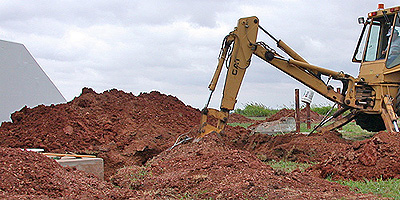 |
A Baco is a must for digging down to the pipes that feed the LCC with power from the old service and other misc lines that came into the LCC. |
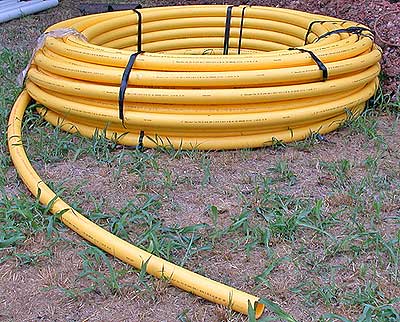 |
On this particular site the owner used
2" ID 2 1/2 "OD Gas Pipe for the service. I personally would
of used Electrical PVC. I would have ran direct burial service wire to
a junction box of some sort by the outside of the LCC then ran 4"
PVC from the junction box to the 4" pipes that come out of the LCC
and tapped on to those. A outside rain tight panel would work good for
the junction box then if a person needed to you would have access to power
outside the LCC for whatever is needed to power stuff on the outside of
the site like lights or power to a gate. I would also drive a ground rod
for the ground of this panel that is outside. Then install a sub panel
in the LCC. Direct burial service cable is alot easier to install than
trying to pull wire 50 - 200+ feet threw a pipe. |
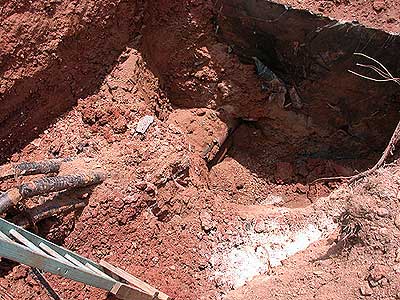 |
Heres a picture of digging down to the
4 4" steel pipes coming out of the LCC. |
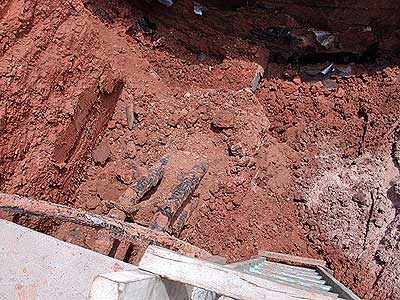 |
These 4" Pipes go from the LCC to the
Communications vault. It would also be a good idea to run power to it
also for future use. There are alot of things that the communications
vault can be used for. |
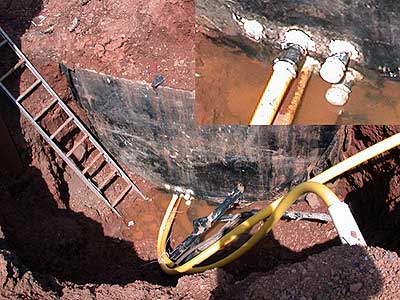 |
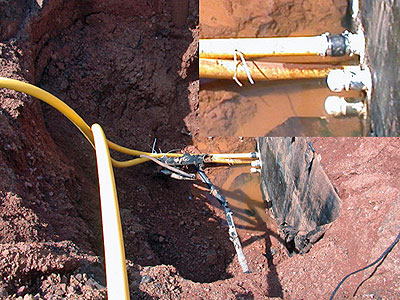 |
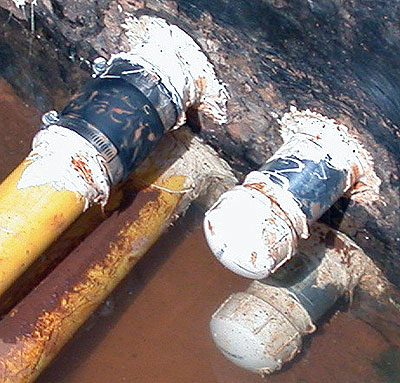 |
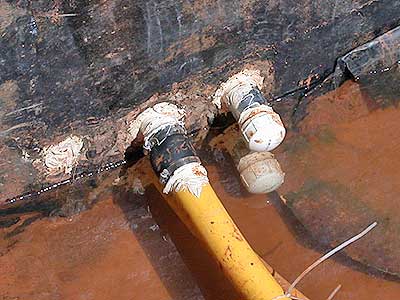 |
A transisition of some sort will be needed
from the old pipes to the new service
conduit. Using some sort of sealer would
be a good idea to help keep water out
of the panel inside the LCC , and capping
what ever pipes that are not needed at
this time.
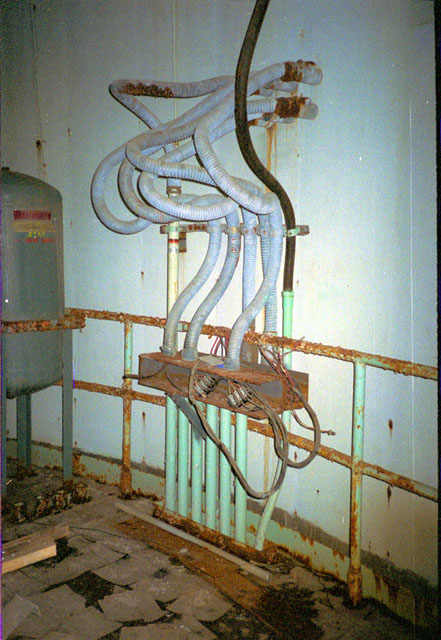 |
<---This I believe is the area where
the pipes come into the |
| This is a photo of a finished panel installed in the LCC. This looks like the flex is installed to a 2" pipe. |
Every installation will have its differences and problems. This
page
is just a guide. Make sure you check your local codes and or
authority having jurisdiction. Any more thoughts or ideas are
welcome.